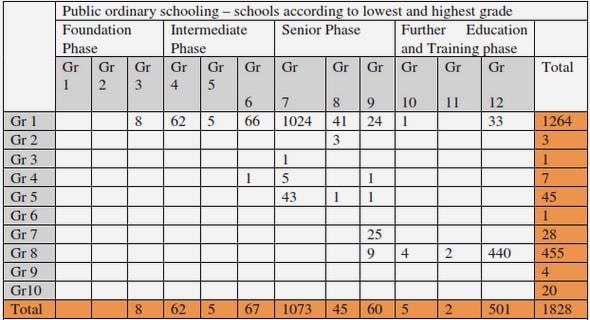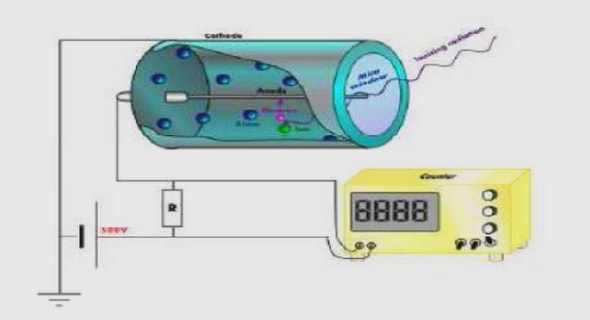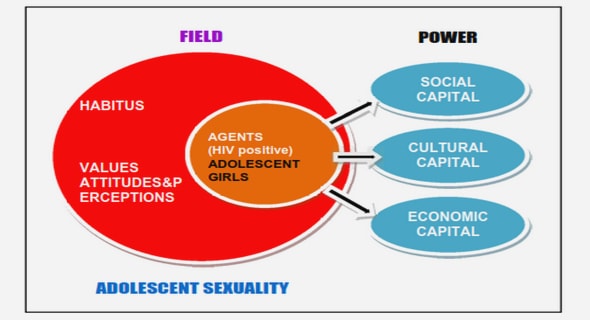Get Complete Project Material File(s) Now! »
CONSERT functioning principle
The instrument design was constrained by planetary mission conditions, such as mass, size, and power, and weather conditions such as operational temperature, and radiation and vibration intensity. It was also constrained by the body selected for the study. CONSERT required that the signal in the Lander and in the Orbiter had good SNR at reception and was coherent during the experiment to permit global processing of the signal for different Orbiter positions.
In a trade-off between technical constraints, signal penetration and spatial resolution, the carrier frequency chosen was 90 MHz, with a bandwidth of 10MHz, and a sampling frequency of 10MHz in IQ configuration. This translates to a resolution of 20 m in the comet nucleus. The bandwidth chosen shows that the noise is mainly dominated by the galactic noise, over the electronic noise of the antenna and electronics. The galactic noise is shown in Figure 4.
Figure 4. Galactic noise Antenna sky temperature as a function of the frequency and zenith angle re-edit from (Kraus, 1986).
Bi-static radar means two separate electronics. There are two clocks, one on each electronic. Even though the clocks have the same frequency nominally, in reality, there is an offset from the expected frequency. This difference will produce a drift in phase between the two clocks, and also drift in the calendars. This clock drift, combined with the planetary constraints for the instrument design, limits the type of clocks that can whose, and also imposes design and operation constraints for the instrument.
The bi-static radar can work in a one-way mode, meaning that one electronic do the transmission and the other receives it, and after, by knowing the absolute values of time for both electronics we can measure the propagation delay. In a one-way operation of the radar, the accuracy needed from the clocks was of 100 ns during the whole Orbit (8h), meaning that the clock stability should be of ∆ ⁄ ≈ 10−12 — which was not achievable with clocks under the planetary mission constraints given to CONSERT. To reduce this requirement in frequency stability, CONSERT used a transponder concept, which reduces the stability needs to ∆ ⁄ ≈ 10−7, by using a two-way propagation. This two-way transmission is what in radar domain is known as a Sounding. We call it a Ping-Pong transmission, where the first transmission (Ping) is a synchronization signal and the transmission back (Pong) is the science signal.
The use of the transponder concept reduces the frequency stability requirement but it splits it into different time scales. We will develop the time analysis in the next chapter, nevertheless, we can note that as there is presence of different time scales the errors at each scale have different impacts, but these errors will be correlated. This impacts will be reflected in errors in the phase of the signal received as well in the propagation delay measured by the system. The time scales of interest for the Transponder concept are the Coherent Accumulation which is the accumulation of several transmitted codes, the time from reception and transmission on the Lander, and time synchronization of the transmission and reception windows between electronics to allow communication. As said before, during the next chapter each time scale will be presented in detail as well as the errors at each one.
In-Time Transponder Concept
The in time-transponder concept implemented in CONSERT, as previously mentioned, consists of two identical electronics, one electronic placed on the body’s surface and another one orbiting the body (called the Asteroid in this section for general description purposes), shown in Figure 5. The Lander is an active “delayed reflector”. This means that the signal transmitted by the Orbiter is received by the Lander and re-transmitted back later with a known delay (Barbin et al., 1999). With this operation, the signal is measured in the time reference of the Orbiter, relaxing the constraint of clock stability (Kofman et al. 2007).
The measurement sequence is as follows: First, the Orbiter transmits a coded signal through the Asteroid to the Lander (Figure 6). The Lander receives this signal and pulse-compresses it to find the propagation delay. Then the Lander sends back the same coded signal but synchronized to the peak detected. The Orbiter samples the signal and stores it for transmission to Earth. If we pulse-compress the signal received by the Orbiter, the propagation delay measured on the Orbiter signal corresponds to twice the propagation delay of the signal through the Asteroid — but the reflections and second paths have the distance of only one travel through the asteroid to the main peak.
Figure 5. Transponder concept block diagram. Both electronics have an accumulation of codes at reception. The only difference between both is the peak compression and detection present in Lander.
As the signal travels through the Asteroid, the SNR is very low at reception. Therefore the signal transmitted is a Binary Phase Shift Key (BPSK) code. Several codes are transmitted continuously, making the transmission periodical, and at reception, these codes are accumulated to improve the SNR.
Figure 6. In-time transponder sequence. Notice the propagation delay measured in Orbiter is twice the real propagation time.
CONSERT operation
The operation of CONSERT starts with a warm-up phase. This phase permits the clocks to reach the frequency stability needed. After this, to guarantee the frequency stability is lower than the 10−7 constraint, a frequency calibration is performed. During the direct line of sight between both electronics, the Lander transmits a pure sinusoid wave to the Orbiter. The Orbiter uses this pure frequency to lock a PLL and correct its own frequency. This tuning phase is also used for the time synchronization of the calendars with a 10 ms accuracy (Barbin et al., 1999). It is important to note that this process needs high SNR to be performed correctly. The electronics then wait until its time to start with the science transmissions at the occultation of the Orbiter by the Asteroid and begin the science transmissions. A Sounding is performed approximately every 2.5 seconds (Rogez et al., 2016), and for a complete Orbiter orbit, this results in a Scan of the Asteroid. Table 1 shows the principal parameters of the instrument.
After the science acquisition (after occultation) and during the direct line of sight, the code transmission is repeated and these transmissions are used as a calibration of the lander delay with comparable weather conditions, i.e. the ones in the science transmissions (Figure 7). It is important to note that after the tuning phase and until the end of the Scan, both electronics work autonomously and separately. Meaning that each clock in each electronic is responsible for the schedule of the operation.
Figure 7. CONSERT science sequence. Rosetta orbit is shown by the blue dashes. Lander Z-axis (ZLDR) vector shows the lander ‘up’ axis and position. Warm-up and tuning occur when Rosetta and Philae are in visibility, in the tuning zone (red), science sounding in the occultation zone (purple). Calibration takes place just after exiting the occultation zone. (Rogez et al., 2016).
CONSERT signal
The CONSERT coded signal is a Maximal-Length Sequence code. This type of code has a similar structure to a random sequence, and therefore the autocorrelation function is desirable. These codes are also called pseudorandom noise. For CONSERT the code was composed of 255 symbols. The receiver accumulates 1024 codes to improve the SNR. The improvement coming from the accumulation is that the signal obtains a gain of a factor of while the noise just increases by a factor of √ .
The received signal for both Lander and Orbiter is first filtered by analog electronics, i.e. the antenna and filters, then it is demodulated and sampled at 10 MHz in IQ configuration. The IQ demodulation mixes a local oscillator signal with the signal to take it to baseband, but it mixes the signal with two signals phase sifted 90° generating two different channels, the In-Phase and Quadrature channels. After it is pulse-compressed to find the propagation delay (Figure 8). This sampling period gives the accuracy limit of the time measurement (+/-50ns).
The time analysis performed for this instrument shows the presence of a sampling error that will introduce a time error in the propagation delay measured on the Lander and Orbiter (Pasquero, Hérique, & Kofman, 2017). The sampling error is a jitter uniformly distributed in one sampling step, after several Soundings. This error will be fully explained and illustrated in the section “Time Model in-time transponder”.
Figure 8. CONSERT signals as a function of time delay. Signals that have propagated through the nucleus, as measured at the output of the matched filter, are presented for different measurement times and compared to the calibration signal during the cruise phase (Wlodek Kofman et al., 2015).
To increase the accuracy of the propagation delay measurement, (Pasquero et al., 2017) propose methods to increase it to over 1/20 of the sampling period limit. The classical compression method uses a reference signal equal to the transmitted, containing the same N points, and therefore there are N time-shifted reference signals to perform the compression. This method limits the resolution to the time resolution between the points. To increase it, it is possible to model the signal and generate a reference signal with more than N points. For this, it is necessary to model signals with a smaller step than the sampling of the signal, and it is needed to take into account the aliasing of the signal in the frequency domain because this is the main limit for this method. In CONSERT aliasing was one of the main limitations, because of the sampling frequency in our new proposed radar we expect this problem is reduced as the sampling frequency has increased.
The data returned from the CONSERT experiment consists of the 255 complex samples of the signal propagated from Lander to Orbiter and 21 samples of the correlation function around the maximum value measured in the Lander, and every 25 Soundings a complete signal of the Lander is transmitted. This limited transmission of Lander data is due to limitations in the data budget available in the mission.
CONSERT results
Several articles have been published showing the results obtained by the Rosetta mission’s study of the internal structure, and how the data from CONSERT helped other objectives such as the localization of Philae (Kofman et al. 2015; Herique et al. 2015; Herique et al. 2016; Ciarletti et al. 2017).
CONSERTs data shows from the measurement of the propagation delay and the form of the signal, that there was no scattering observed down to -20 dB it is possible to conclude that the measured part of the comet is very homogeneous for a scale of 10’s of meters. However, the well-defined two or three paths on the propagation delay could signal the presence of larger structures (Kofman et al. 2015).
Table of contents :
Chapter 1. Introduction
1.1. Asteroid study missions
1.2. Study of the internal structure of small bodies
1.3. Rosetta mission
Chapter 2. Small bodies radar tomography by bi-static radar
2.1. CONSERT
2.1.1. Instrument description
2.1.2. Scientific objectives of CONSERT
2.1.3. CONSERT functioning principle
2.1.4. In-Time Transponder Concept
2.1.5. CONSERT operation
2.1.6. CONSERT signal
2.1.7. CONSERT results
2.1.8. Possible enhancement
2.2. Low-Frequency Radar (LFR)
2.2.1. AIDA mission
2.2.2. LFR instrument description
2.2.3. Scientific objectives
2.2.4. LFR Antennas
2.2.5. LFR Electronic box
LFR Digital Board
2.2.6. LFR Operation
Operation modes
2.3. General Approach of the thesis
2.3.1. Research objectives
2.3.2. Thesis organization
Chapter 3. LFR Time Analysis
3.1. Introduction to clocks
3.1.1. Types of oscillators
Atomic resonator
Quartz Crystal Resonator
3.1.2. Frequency stability
3.1.3. Deterministic processes
Aging
Temperature
Initial frequency offset
Others
3.1.4. Random processes
3.1.5. Allan variance
3.1.6. Clock model
3.1.7. CONSERT and LFR clocks
3.2. Requirement analysis for each time scale
3.2.1. Coherent accumulation
3.2.2. Ping to Pong
3.2.3. Sounding to Sounding time reference
3.2.4. Sounding to Sounding phase reference
3.2.5. Tx-Rx windows
3.2.6. Frequency stability resume
3.3. Time Model in-time transponder
3.3.1. Time events model
3.3.2. Peak position measured in the Lander
3.3.3. Propagation delay measured in the Orbiter
3.3.4. Time errors introduced by the system
Sampling time error
SNR peak time error
3.4. Clock-drift-follow technique (Pong-Pong technique)
Chapter 4. LFR simulation
4.1. Short-term LabView simulator
4.2. Long-term simulation
4.2.1. Assumptions for the simulator
4.2.2. Algorithm
4.3. Results from simulation
4.3.1. Accumulated time error
4.3.2. Expected behavior of Lander peak detection
Comparison between CONSERT and simulator Lander peak position
4.3.3. Expected behavior of Orbiter propagation delay
4.3.4. Clock characteristics effects
Initial frequency offset
Aging
Temperature
4.3.5. Phase rotation effect
Phase rotation effect comparison between CONSERT calibration data and Simulator
4.3.6. LFR specifications
Ping to Pong
Sounding to Sounding time reference
Sounding to Sounding phase reference
Tx-Rx windows
Chapter 5. Real clock measurement
5.1. Test bench design
5.1.1. Requirements
5.1.2. Time and phase measurement techniques
ADC
DMTD
5.2. DMTD analysis
5.3. Implementation of DMTD
5.3.1. Hardware Board
5.3.2. Digital Design
Glitch effect in the FPGA
5.3.3. Fridge
5.4. Data Preprocessing
5.5. Test bench verification
5.6. Test bench performances
5.7. Integration of data Test Bench to Simulator
Chapter 6. Clock validation and compensation methods
6.1. Clock validation for frequency requirements
6.2. Phase and time reconstruction
6.2.1. Clock drift estimation
6.2.2. Time reconstruction
6.2.3. Phase reconstruction
6.2.4. Number of Pong-Pong transmissions
Chapter 7. Conclusions and perspectives
7.1. Time analysis advantages
7.2. Instrument improvements (CONSERT – LFR)
7.2.1. Power consumption by Tx window
7.2.2. ADC sampling frequency
7.2.3. Second version Test Bench
7.3. Perspectives
7.3.1. Clock characterization
7.4. Calibration
7.4.1. Calibration and onboard correction
7.4.2. New clock technologies


